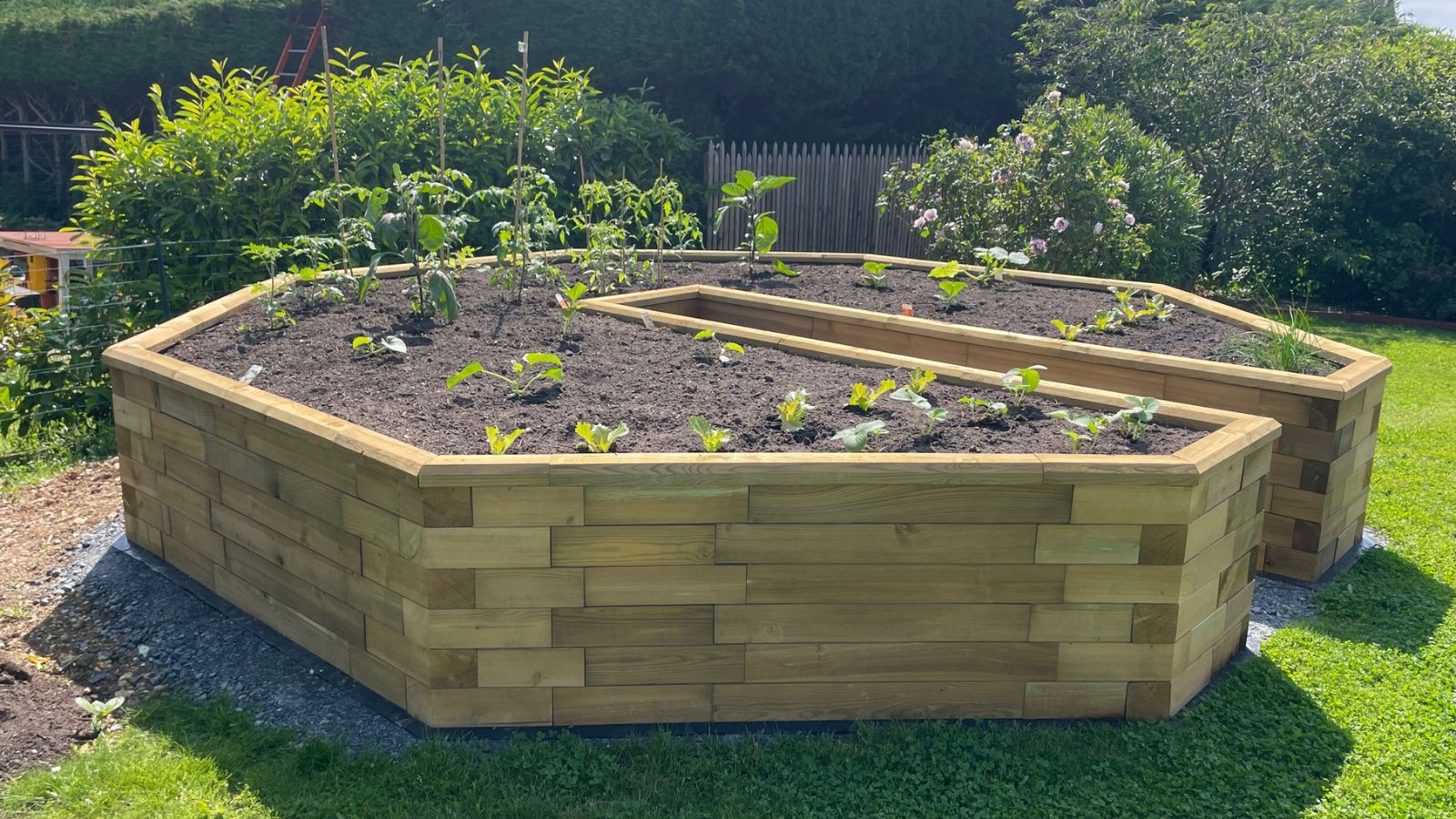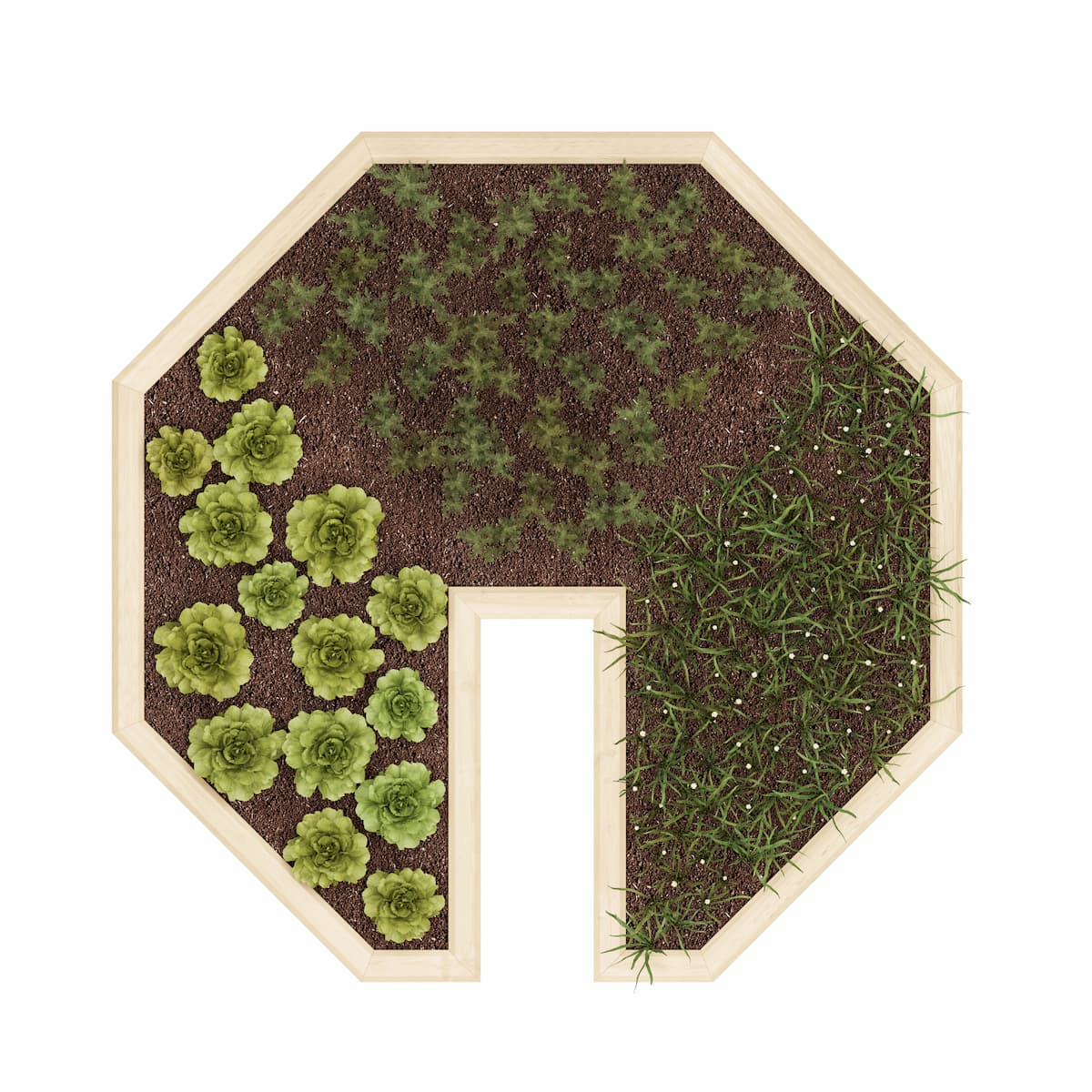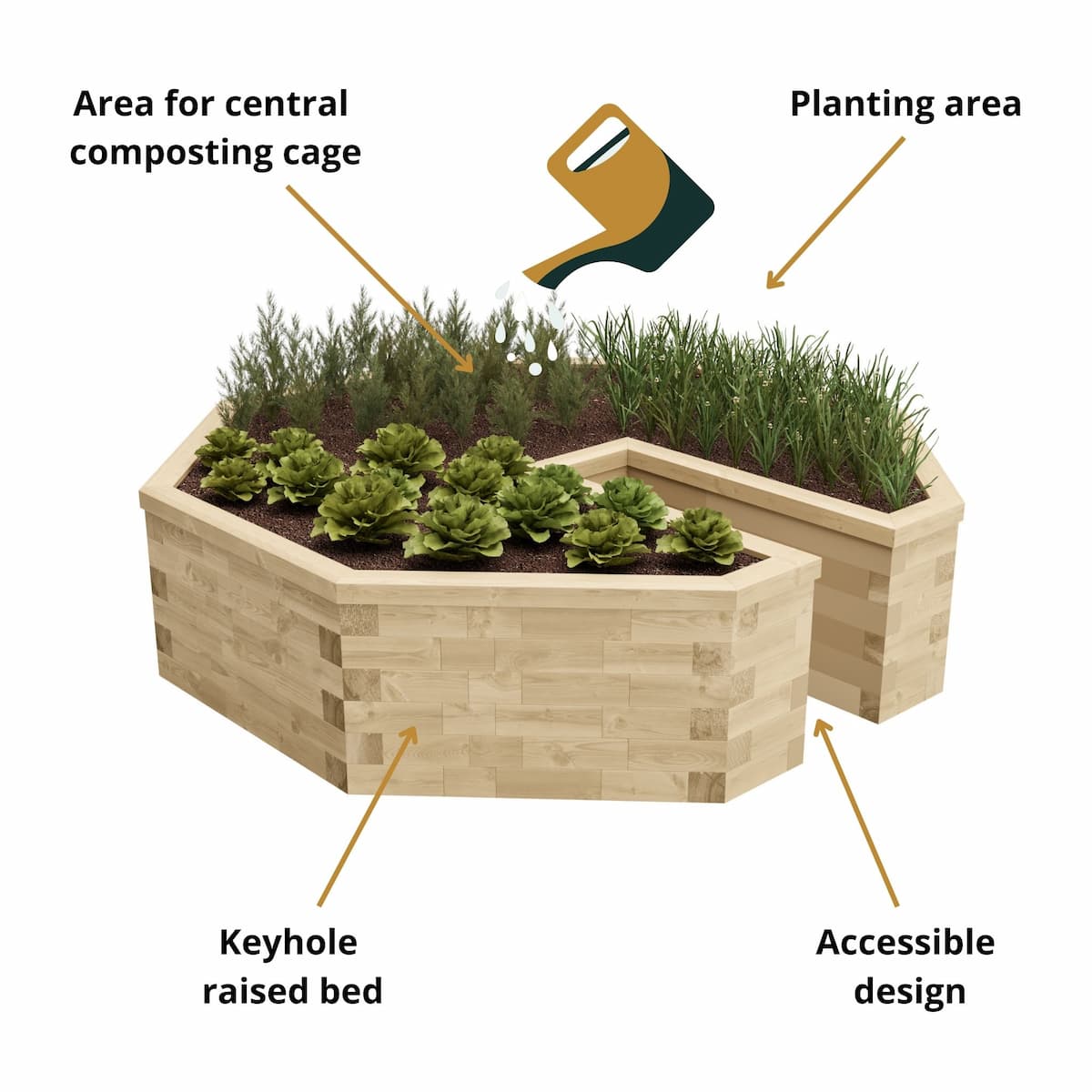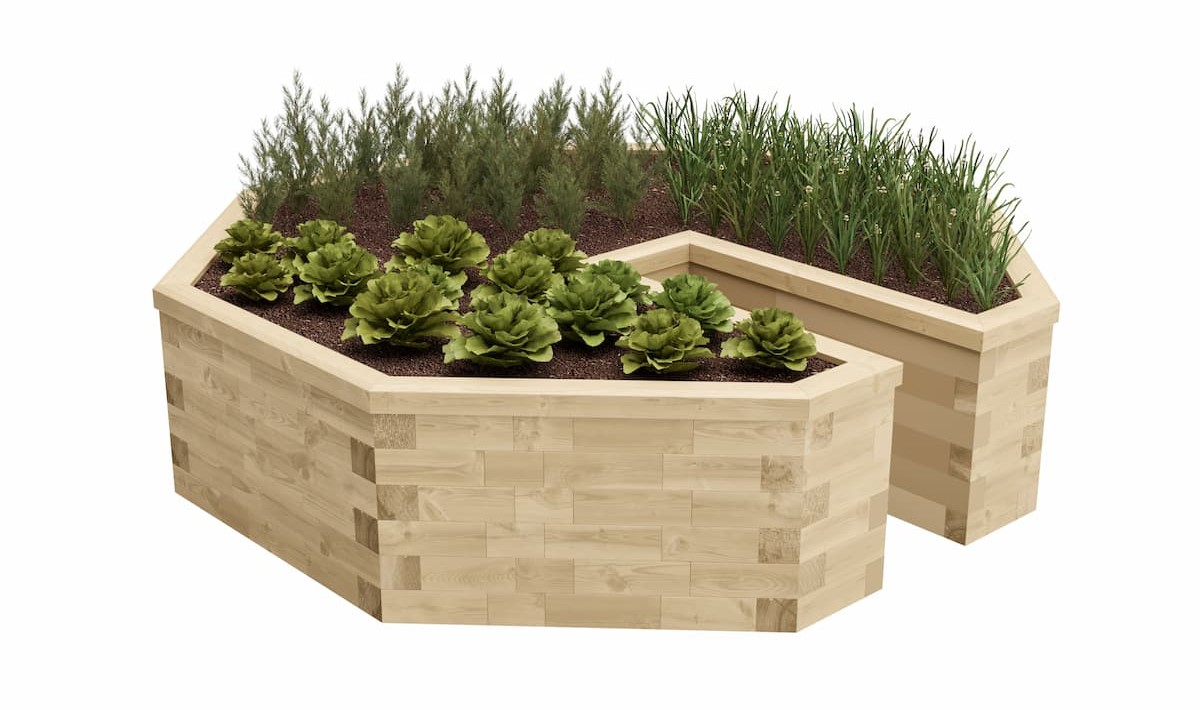Guide to Keyhole Raised Bed Gardening

Originally created to help grow healthy crops in dry climates, the keyhole gardening method is fast becoming a popular way to grow crops, using minimal space and less water, in your own back garden. Using raised beds that resemble keyholes, the method allows for a sustainable approach to waste management and food production.
If you are looking to build a keyhole raised bed, we’ve designed a WoodBlocX keyhole kit that’s the perfect gardening solution!
What is keyhole gardening?
A traditional keyhole garden is a raised circular garden bed with a wedge-shaped cutout along one side that gives easy-access to a compost area in the middle and growing areas on all sides. This central composting section works as a self-fertilising element for the plants, keeping the soil naturally replenished.
The soil used to create keyhole raised gardens is specially layered (with drainage) to boost its ability to maintain moisture and nourishment, giving crops the best chance to grow healthy and strong.
The composting basket at the centre of keyhole raised beds is used for watering the crops, keeping the soil wet from deep within the bed. This method of watering directly through the middle gives nutrients to the plants on a regular basis. Organic food leftovers and paper goods that might otherwise end up in the general rubbish are recycled, helping to reduce waste too. It’s important to remember that keyhole gardens were originally created for hot, dry areas - this means they retain water better so don’t need to be watered as frequently as other raised bed types.
Keyhole gardens are one of several creative adaptations being used to counteract climate change and improve environmental sustainability. Originating in Africa, the keyhole gardening method has gained popularity in other hot, dry climates around the world such as Texas and Samoa. Keyhole garden raised beds are also a popular growing method in many European countries such as Germany and France due to their functional design and ability to reduce water consumption.
What can you grow in a keyhole raised bed?
Keyhole raised beds create the ideal environment to grow a wide variety of crops and the shape of the raised bed allows crops to be sown close together to maximise yield. Leafy greens and root veggies such as carrots and onions love this method of gardening. Stay away from planting crops with wide-reaching root systems such as tomatoes or courgettes.
Our handy list details the perfect crops to grow and those which aren’t recommended.
(root & leafy greens)
- Carrots
- Garlic
- Beets
- Radishes
- Onions
- Spinach
- Lettuce
- Herbs
(wide-reaching root systems)
- Cabbage
- Peppers
- Aubergines
- Chilies
- Potatoes
- Squash
- Corn
- Tomatoes

There are so many positive reasons to use the keyhole gardening method when growing crops - reducing water consumption, easy access and maximising yield are the top three!
Keyhole raised beds retain moisture meaning you don’t have to water your crops as often during the growing season. Furthermore, the central area at the heart of the bed creates a sustainable method to generate new compost and promotes recycling.
The ability to sow plants closer together (versus other traditional gardening methods) allows for a more compact method of agricultural production, improving overall production and yield. When filled with a drainage layer and good-quality topsoil, keyhole gardening requires very little weeding!
Because of the high raised bed style that allows access to the centre, they are less strenuous on the back too - this clever design feature also allows you to get hands-on across all areas of the bed, leaving no space where you can’t reach or sow. This makes keyhole raised beds a whole lot more accessible to the elderly and children or those with mobility challenges to plant, tend, and harvest in their own gardens. The raised bed design also removes the threat of animals, pets and humans trampling on the crops!

Keyhole raised bed tips
- Mulching - add a two-inch layer of dried leaves or shredded bark around the base of the plants. This is called ‘mulching’ and it helps keep the moisture in the soil from evaporating.
- Raised bed location - look for an area that's relatively flat. Avoid low-lying areas where water collects naturally. Ensure the area receives at least six hours of direct sunlight per day.
- Creating composting - it's the ultimate recycling process: use dry leaves, grass clippings, and leftover organic waste (do not compost meat) to get your central compost mound started! Add a little water to speed up the decomposing process. Remember to slope the surrounding soil down away from the central compost cage to help nutrients flow all the way to the outside edges of the bed.
- Keyhole watering - water your keyhole garden in the centre, directly in the compost cage or mound. This watering method will filter down through the compost and then seep forth, bringing nutrients to the soil from the bottom up!
- Maintenance - once every three to four years, it's recommended to clean out the compost cage to remove depleted compost and start a fresh compost cage. You could also give your raised bed frame a jet-wash to make it look fresh.
Read our Keyhole Raised Bed customer case study
This is an excellent example of a WoodBlocX keyhole raised bed for growing edibles in our customer Bruno's garden.

Common keyhole garden problems
Problems with pests? Like all gardening methods, sometimes pests can get to your crops. Chicken wire is a great solution for this as it keeps the unwanted animals out. Alternatively, you could use WoodBlocX crop protectors with netting to create a cost-effective protected growing area.
Too much rain? A roof can be added to deflect excessive rain away from the central compost basket. An added roof can also help conserve compost moisture during periods of drought.
Does your keyhole raised bed smell? The centre of your keyhole garden should not smell, if it does your compost pile is out of balance and needs attention - learn how to stop smelly compost!
Get started with a WoodBlocX keyhole raised bed kit
Due to growing interest through our Free Design Service from customers across the UK and Europe, we’ve designed a keyhole raised bed kit that you can buy ‘off-the-shelf’ to be delivered to your home.
Built to last 15+ years when installed following our guidelines, it’s a great solution for creating an accessible gardening area at home. Our clever wooden block and dowel system creates a durable structure that’s quick and simple to build (much like Lego!). The wooden components included in your kit are all pre-cut so there’s no need for extra cutting or material waste created.
Our keyhole raised bed kit is beautiful and practical, giving you extra height and adding shape and structure to your outdoor space. All you need to do is install a central composting area to start keyhole gardening! If you need a bespoke kit size for your garden area, we can make a made-to-measure solution to fit your space perfectly.






